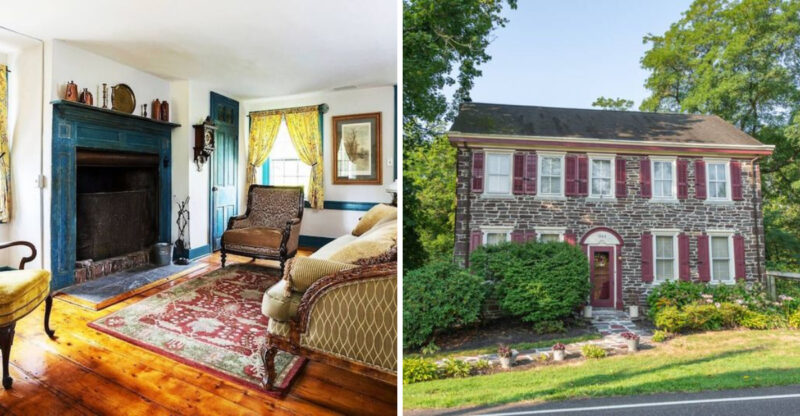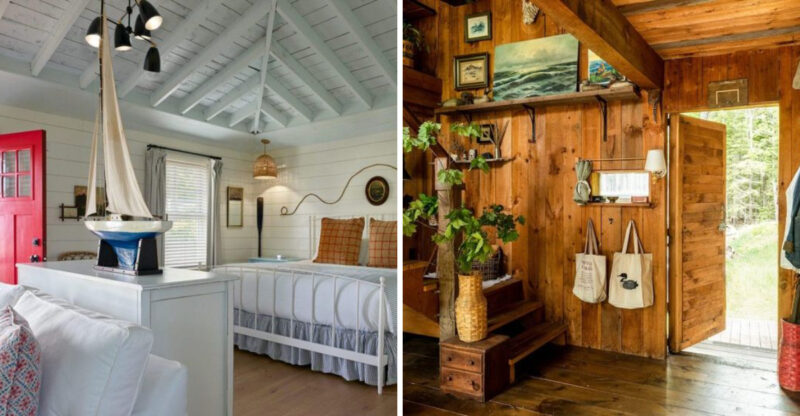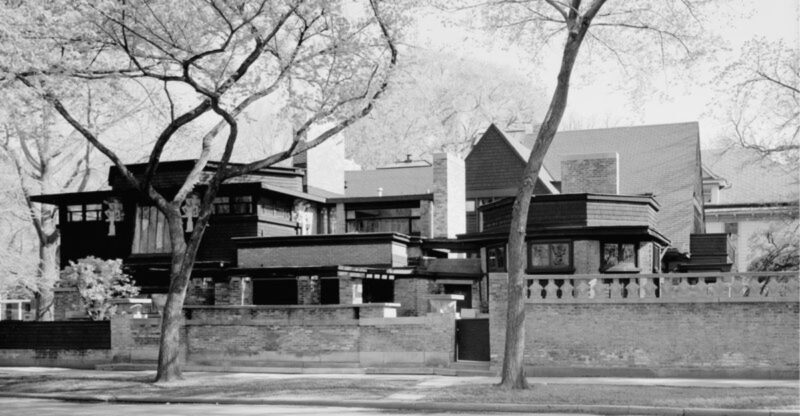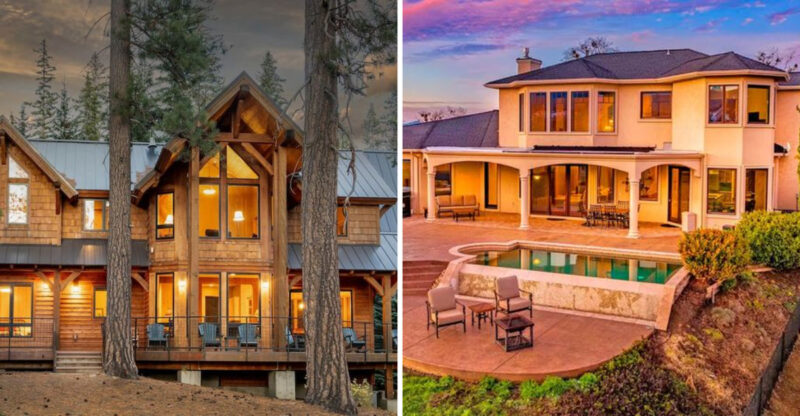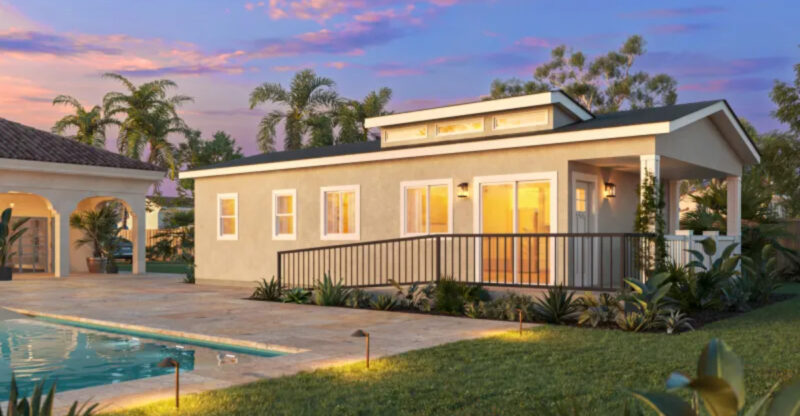The World’s Most Unexpectedly Colorful Homes Will Inspire You

Ever walked down a street and stopped in your tracks because a house was so boldly painted it made you smile? It’s like the building decided to wear its brightest party outfit just for you.
Color transforms ordinary buildings into extraordinary landmarks that capture our imagination. From rainbow-hued neighborhoods to entire villages painted in kaleidoscopic shades, these colorful homes around the world prove that a little paint can create pure magic.
1. Rainbow Row Steals Hearts In Charleston
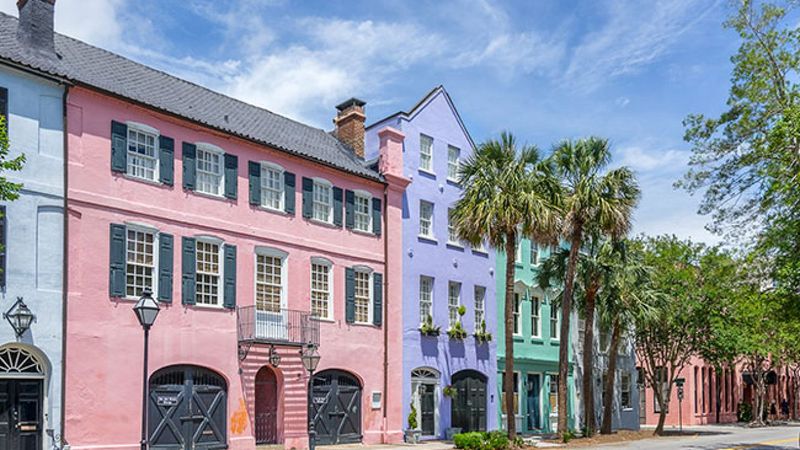
How could anyone resist these candy-colored Georgian townhouses lining the waterfront? Rainbow Row wasn’t always a tourist magnet. After surviving earthquakes and hurricanes, these historic homes were painted in pastel hues during the 1930s restoration.
A clever merchant started the trend, painting her building pink to keep it cool and distinguish her shop. Neighbors followed with their own colors, creating this iconic streetscape that’s now Charleston’s most photographed spot. The palette remains strictly regulated to preserve its historic charm.
2. Bo-Kaap’s Radiant Streets Tell Freedom Stories
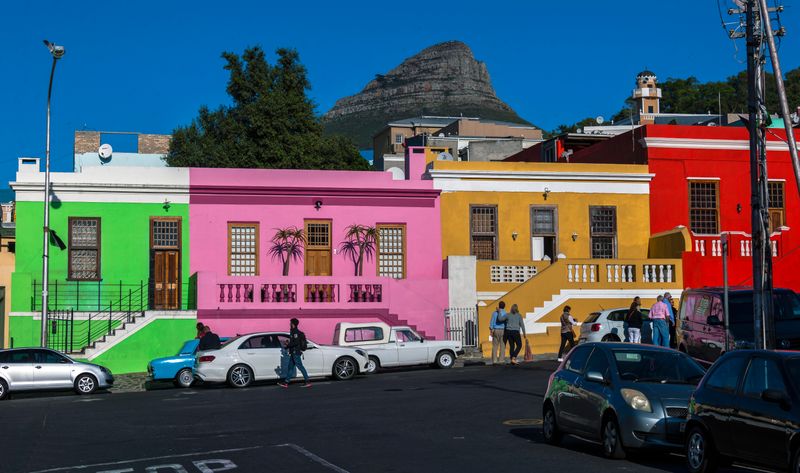
If walls could talk, these would sing liberation songs! Cape Town’s Bo-Kaap neighborhood bursts with cube-shaped homes in electric blues, shocking pinks, and lime greens against the backdrop of Table Mountain.
Bo-Kaap’s colors represent freedom. When formerly enslaved people could finally own property, they painted their homes in bright colors as an expression of their newfound independence.
What began as a celebration of freedom has evolved into a cultural landmark that preserves the Cape Malay heritage while fighting against gentrification.
3. Burano Island Dazzles With Rainbow Reflections

Though everyone assumes these fishermen painted their homes brightly to find their way home through the Venetian fog, that’s just a romantic myth! Burano’s color tradition actually stems from a practical system used to mark property boundaries.
Each family follows a specific color scheme that must be approved before any painting begins. The strict color-coding system ensures no neighboring houses share the same shade.
When the lively buildings reflect in the canal waters, they create a double rainbow effect that photographers chase at sunrise and sunset.
4. Cinque Terre’s Cliffside Color Palette Defies Gravity
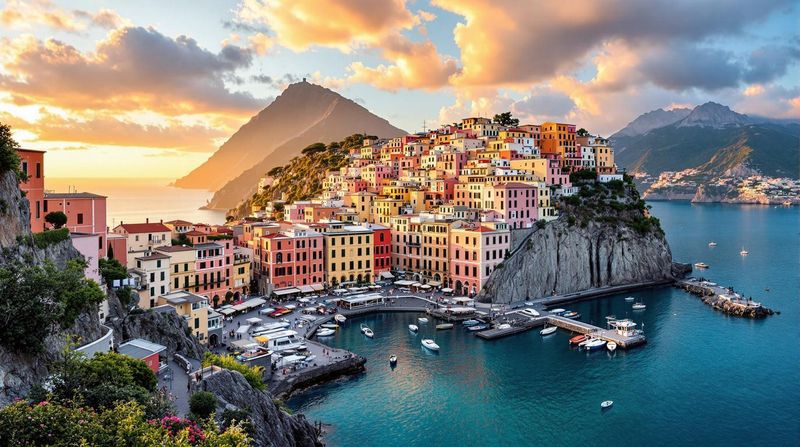
Where else can you find homes that look like they’re tumbling into the sea? Cinque Terre’s five fishing villages cling precariously to Italian cliffs, their buildings painted in sun-baked yellows, terracottas, and pinks.
Each village showcases its own signature color scheme. Riomaggiore glows with warm reds and oranges, while Vernazza features more blues and greens.
Locals claim the colors once helped fishermen spot their homes from the sea during storms. Today, strict preservation laws maintain this UNESCO World Heritage site’s iconic technicolor appearance.
5. Kampung Pelangi Transformed From Slum To Spectacle
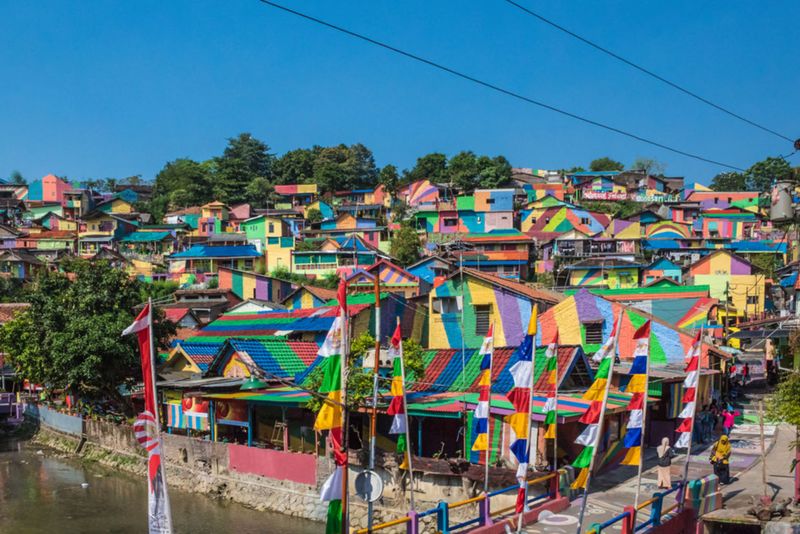
Did you know a coat of paint could revolutionize a community? This Indonesian village was once a struggling slum until a local school principal suggested painting every building in rainbow patterns.
Kampung Pelangi (literally “Rainbow Village”) received a $22,000 government grant for its makeover in 2017. More than 230 homes were transformed with multicolored stripes, polka dots, and geometric patterns.
Tourism boomed overnight, bringing economic opportunities to residents who now maintain their bold-colored homes with pride.
6. Guatapé’s Zócalos Tell Stories In Color
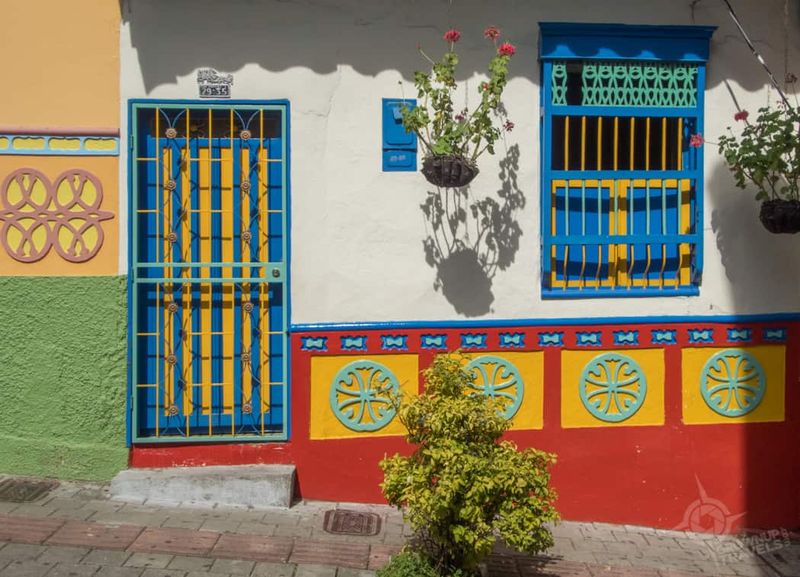
When a house becomes a personal billboard, magic happens! Colombia’s lakeside town of Guatapé features homes adorned with zócalos, radiant 3D friezes that cover the lower portion of buildings in explosions of color.
Each zócalo tells the homeowner’s personal story through symbolic images. A family of fishermen might display boats and fish, while farmers showcase livestock or produce.
This tradition began in the 1800s but gained momentum in the 1950s when residents competed to create the most elaborate designs. It transformed the entire town into an open-air art gallery.
7. Jellybean Row Houses Brighten Foggy Newfoundland
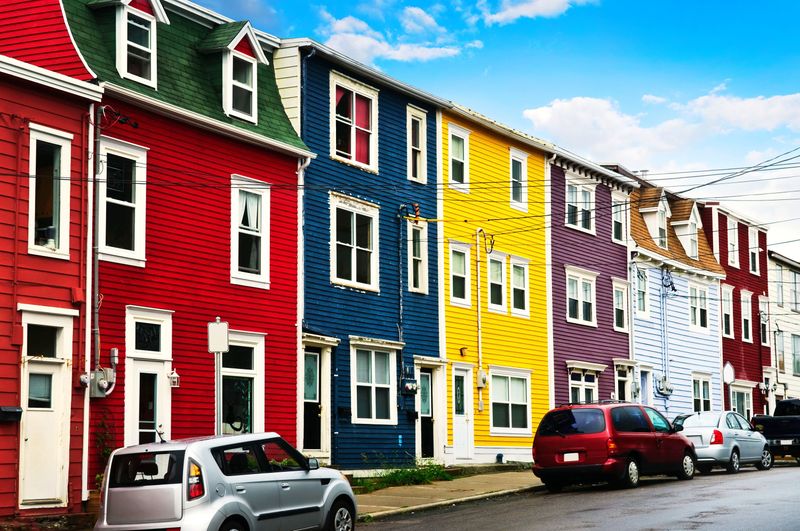
When fog blankets St. John’s for 124 days a year, you need something bright to lift your spirits! Jellybean Row isn’t actually a single street but a nickname for the city’s technicolor Victorian houses scattered throughout downtown.
These narrow, attached homes were originally painted in bold colors to help fishermen navigate home through dense harbor fog. Today, cherry reds, cobalt blues, and sunshine yellows transform what could be a dreary northern cityscape into a cheerful, whimsical neighborhood.
Even during harsh Newfoundland winters, these houses provide a psychological boost to residents.
8. Las Palmitas’ Macro-Mural Unites A Community
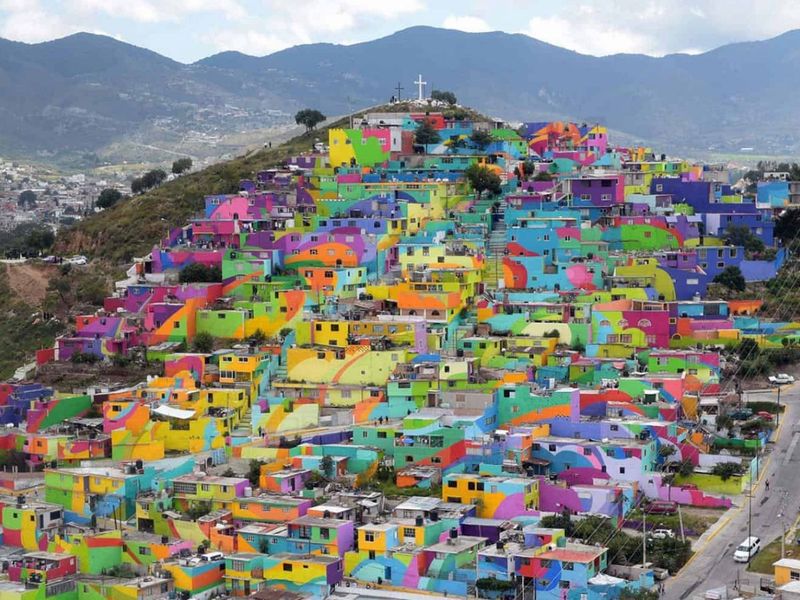
What happens when you turn an entire hillside neighborhood into one massive painting? Las Palmitas in Pachuca, Mexico, underwent a remarkable transformation when 209 homes across 20,000 square meters became a single giant artwork.
Government officials partnered with street artists collective Germen Crew to create this rainbow-hued macro-mural. Each house contributes to the larger design that’s only fully visible from a distance.
Beyond beautification, the project reduced youth violence by 79% as residents worked together on their community masterpiece. A proof that color can actually change lives.
9. Jodhpur’s Blue City Creates A Heavenly Landscape

When an entire city adopts one color, the effect is simply breathtaking! Jodhpur’s old quarter features thousands of buildings painted in varying shades of blue, creating an otherworldly landscape against Rajasthan’s desert backdrop.
Theories about the blue tradition abound. Some say it began with Brahmins (high-caste residents) marking their homes, while others claim the color repels termites or keeps buildings cool.
Whatever the origin, the azure labyrinth of narrow streets creates a mesmerizing effect when viewed from Mehrangarh Fort above, earning Jodhpur its nickname as the “Blue City.”
10. San Francisco’s Painted Ladies Showcase Victorian Elegance
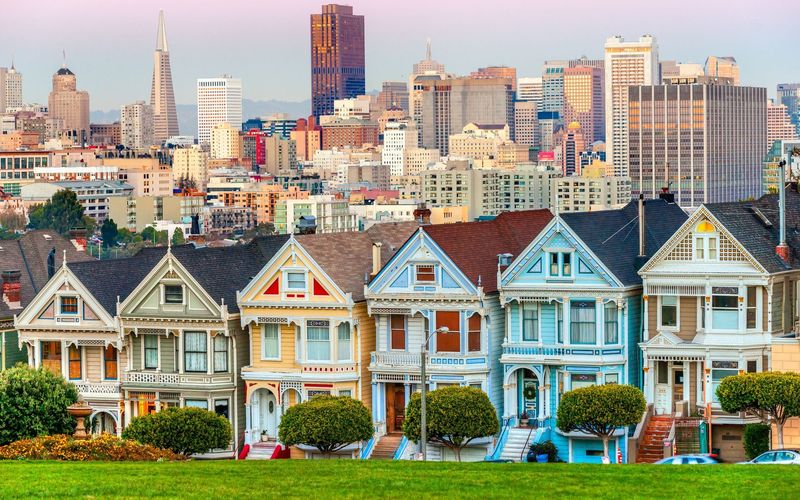
Though they’re not the flashiest homes on our list, these grand Victorian and Edwardian buildings revolutionized urban architecture with their “colorist movement” in the 1960s.
The most famous row sits in Alamo Square, where pastel facades with white trim create a postcard-perfect scene against the downtown skyline. Artist Butch Kardum started this trend by painting his Victorian in blues and greens, shocking neighbors who soon followed suit.
The colorful restoration movement saved countless historic buildings from demolition during urban renewal. Today, these meticulously maintained homes sell for millions while remaining San Francisco’s beloved icons.
11. Chefchaouen’s Blue Maze Calms The Moroccan Mountains
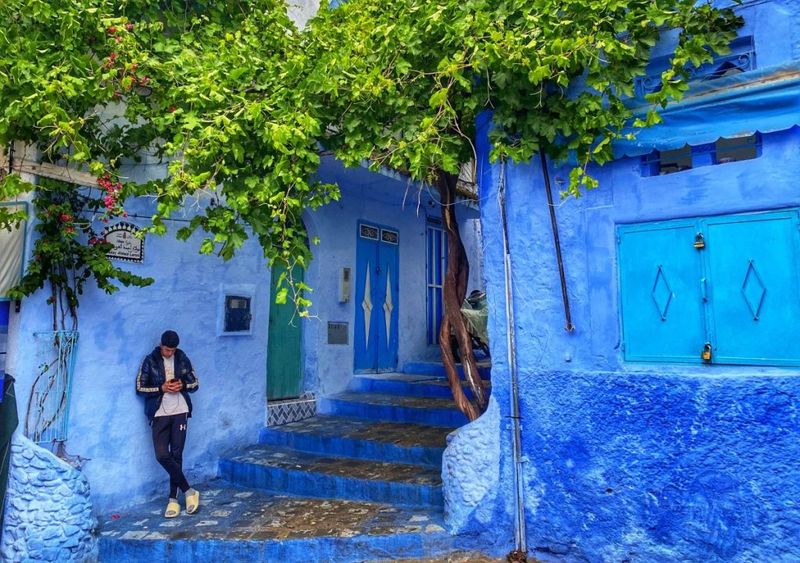
Nestled in Morocco’s Rif Mountains, an entire city glows in mesmerizing shades of blue. Locals began painting Chefchaouen this striking color in the 1930s, creating a living artwork that flows through narrow streets and up ancient walls.
Some say the blue keeps mosquitoes away or symbolizes the sky and heaven. Others claim Jewish refugees introduced the tradition, as blue represents divinity in their culture. Whatever the reason, the effect is magical.
Walking through Chefchaouen feels like entering another world. A cool, calming escape from Morocco’s usual earth tones. The contrast between the blue buildings and colorful goods in the marketplaces creates a photographer’s paradise unlike anywhere else.
12. Procida Island’s Pastel Palette Brightens Italy’s Coast
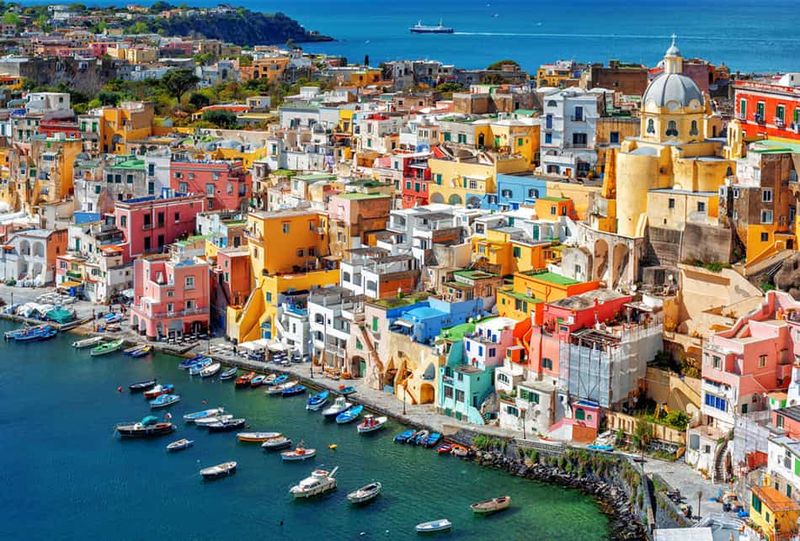
“The lemons here grow as big as your head!” locals might tell you on Procida, where fruit-inspired yellows, pinks, and mint greens coat fishing homes along the Mediterranean. Unlike its famous neighbors Capri and Ischia, this tiny Italian island remained a hidden jewel until recently.
Fishermen originally painted their homes in bright colors so they could spot them from sea. Today, these candy-colored buildings stacked along the harbor create a photographer’s dream that influenced Wes Anderson’s film aesthetic.
The island’s Marina Corricella neighborhood offers the most spectacular views, with homes seemingly piled atop one another in a delicious visual feast. It perfectly captures the joyful spirit of southern Italy.
13. Júzcar’s Smurf Village Transforms Spanish Tradition
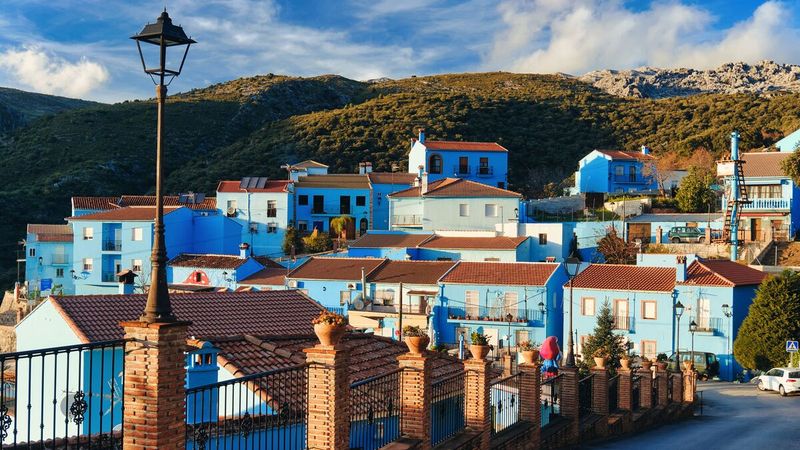
Imagine driving through Spain’s white villages and suddenly encountering an entirely blue town! In 2011, Sony Pictures paid to paint the traditional white buildings of Júzcar bright blue to promote “The Smurfs” movie. The temporary marketing stunt became permanent when tourism boomed.
Before the blue makeover, this tiny Andalusian village of just 250 residents struggled economically. Now visitors flock to see the surreal blue church, town hall, and homes nestled among chestnut trees in the mountains.
Though controversial to some preservation-minded Spaniards, the villagers voted to keep their Smurf identity. The unexpected color revolution saved their community by creating jobs and bringing international attention to this formerly overlooked corner of Spain.
14. Valparaíso’s Hillside Canvas Celebrates Chilean Freedom
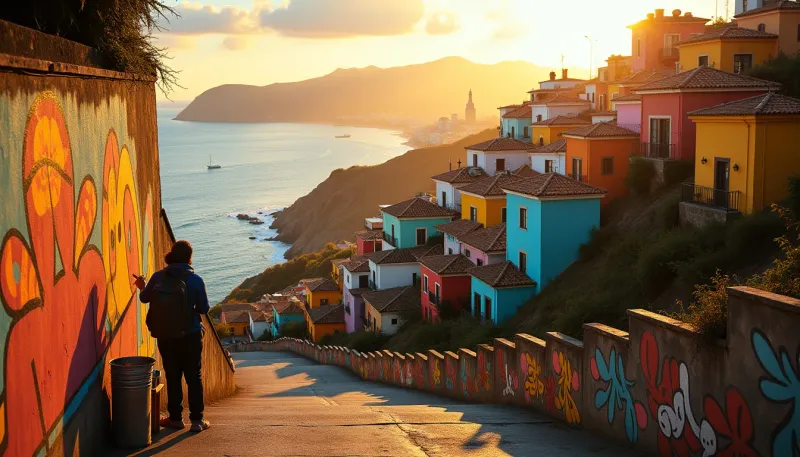
Graffiti and colorful house colors collide in this Chilean port city where entire neighborhoods function as open-air art galleries. After Pinochet’s dictatorship ended in 1990, Valparaíso exploded with color as residents reclaimed their freedom of expression on every available surface.
Funiculars (hillside elevators) carry visitors up steep inclines to discover homes painted in electric blues, sunshine yellows, and fiery reds. No color scheme is too bold here! The UNESCO World Heritage site attracts artists worldwide who contribute murals to the ever-changing landscape.
Many homes feature combinations that would seem chaotic elsewhere but somehow work perfectly against the Pacific Ocean backdrop. The colors reflect both the city’s bohemian spirit and its resilience through difficult political times.
15. Jaipur’s Pink City Honors Royal Traditions
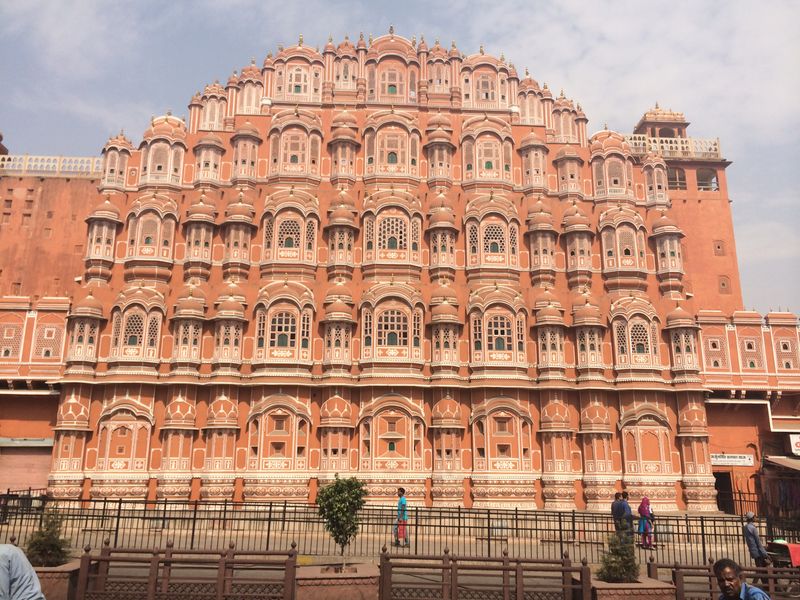
The terracotta-pink buildings of Jaipur weren’t always this color. In 1876, Maharaja Ram Singh ordered the entire city painted pink, the color of hospitality, to welcome Britain’s Prince Albert. The royal decree stuck, and today, a law requires all buildings in the old city to maintain their distinctive salmon-pink hue.
Morning sunlight makes the Pink City truly magical, when the rose-tinted buildings seem to glow from within. Elaborate architectural details like latticed windows and ornate doorways stand out against the uniform color, creating a surprisingly varied landscape despite the single-color rule.
Tourists often expect disappointment, thinking “pink” is just a nickname. Their surprise upon seeing an actual pink city makes Jaipur one of India’s most photographed urban centers and a testament to color’s power in creating identity.

